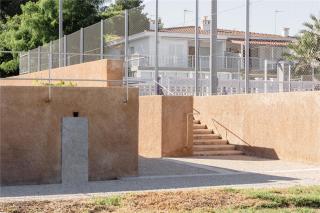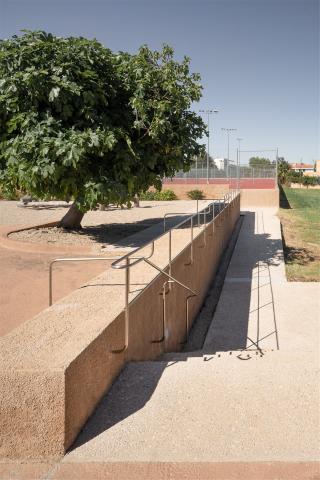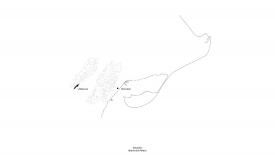西班牙塞拉马网球俱乐部景观设计 | Bajet Giramé
-
项目名称:塞拉马网球俱乐部
-
项目地点:西班牙塔拉戈纳省阿尔卡纳尔
-
项目规模:2800㎡
-
设计公司:
-
图片来源:Joan Guillamat
计划之外的景观
Landscapes in the meantime
项目毗邻阿尔法克斯湾,是一个历史村落建筑群的外部空间,名为Masía。原场地中仅留存有一些无人打理的设施,供游客使用,包括几块网球场,一块餐厅平台,一个泳池以及一个阳光房。曾经那些不痛不痒的翻新工程并没能让场地的运作和冷清的氛围得以改善。而如今项目的重生算是无意之举,因为甲方最初只是想要翻新网球场,直到设计重心转为提升这些夹缝中的空间和走道,以便为未来潜在的开发计划提供基础设施支持。
Located by the “Alfaques” Bay, the exterior spaces of an historical rural construction (called Masía) had been reduced to residual interstices in-between autonomous pieces for touristic use: a few tennis courts, the terrace of a restaurant, a pool and a solarium. These were the result of modest works of renovation accumulated overtime following the sporadic needs of a modestly run management. This project was born “uncommisioned” since the client was simply considering the upgrade of the tennis courts, until the focused was turned into the improvement of such interstices and walkways in order to provide an infrastructural support for the uncertain future developments.
▼一个历史村落中的公共空间更新
The reconstruction of an exterior space in an historical village © Bajet Giramé + JAAS
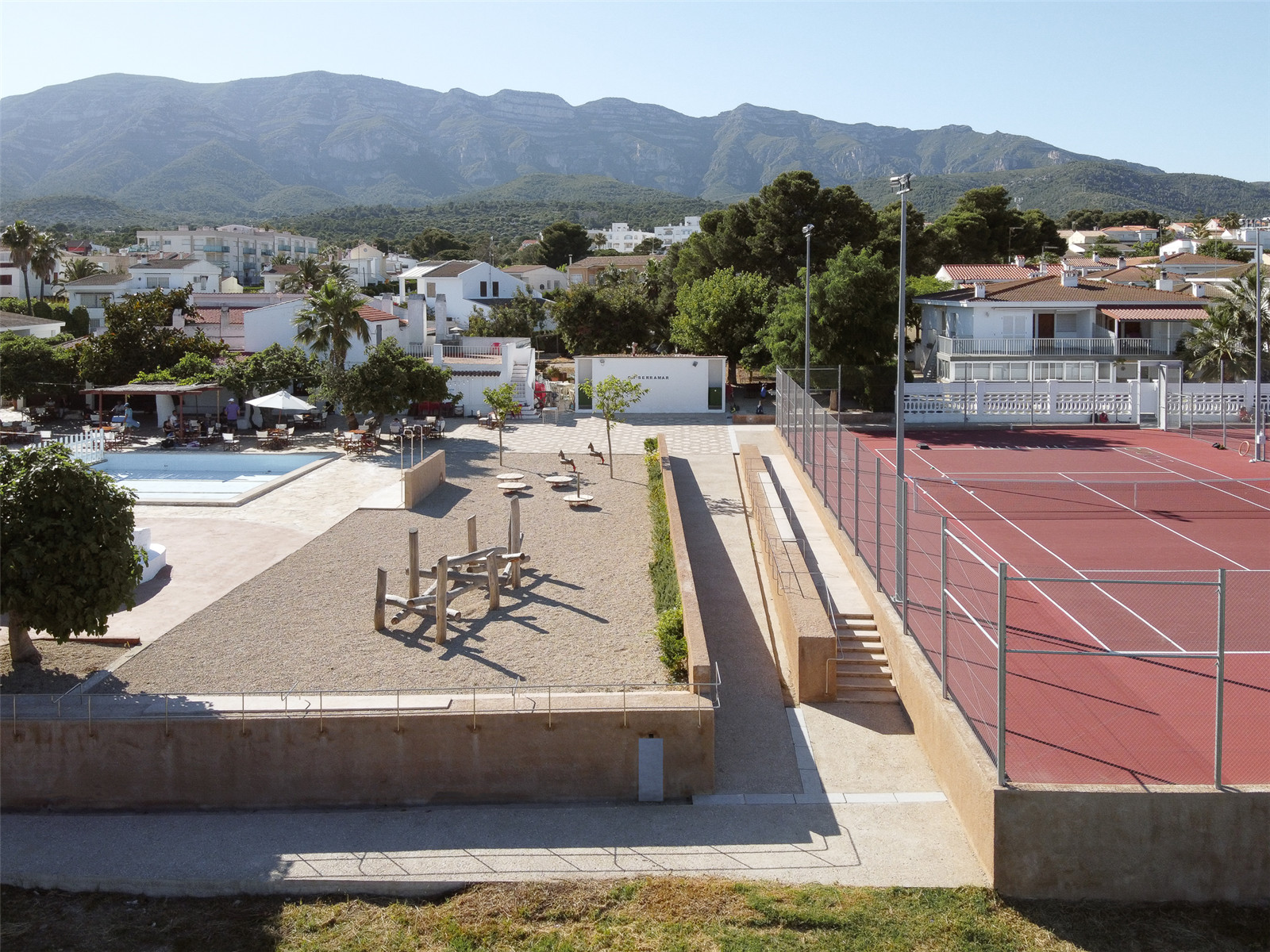
该设计效仿周边地区的梯田,不仅将两块面积巨大的平台整合在一起,尤其还重塑了场地的边界和一些不起眼的空间元素,如长期存在的走道、小角落和缓坡。从附近采石厂采集的塞尼亚石用作主要的建造材料,被设计成任何可塑的形态。平台之间的空隙被转换成了能供人、能源和水通过的基础设施走廊。地下的蓄水池可储存收集来的雨水,用于灌溉外部空间和花园里的本地植物。
Taking the agricultural terraces in the surrounding territory as a model, the project consolidated two large surfaces and, particularly, involved the definition of its borders and the interstices amongst them: permanent walkways, small corners, and a gently sloped ramp. For their construction, Senia Stone—sourced from a nearby quarry—was used in all of its possible forms. The interstices between platforms were turned into an infrastructure channeling people, energy and water, to be stored in a subterranean reservoir used to water all the exteriors spaces and gardens with autochthonous species.
▼不同平面的整合
The consolidation of different surfaces © Joan Guillamat
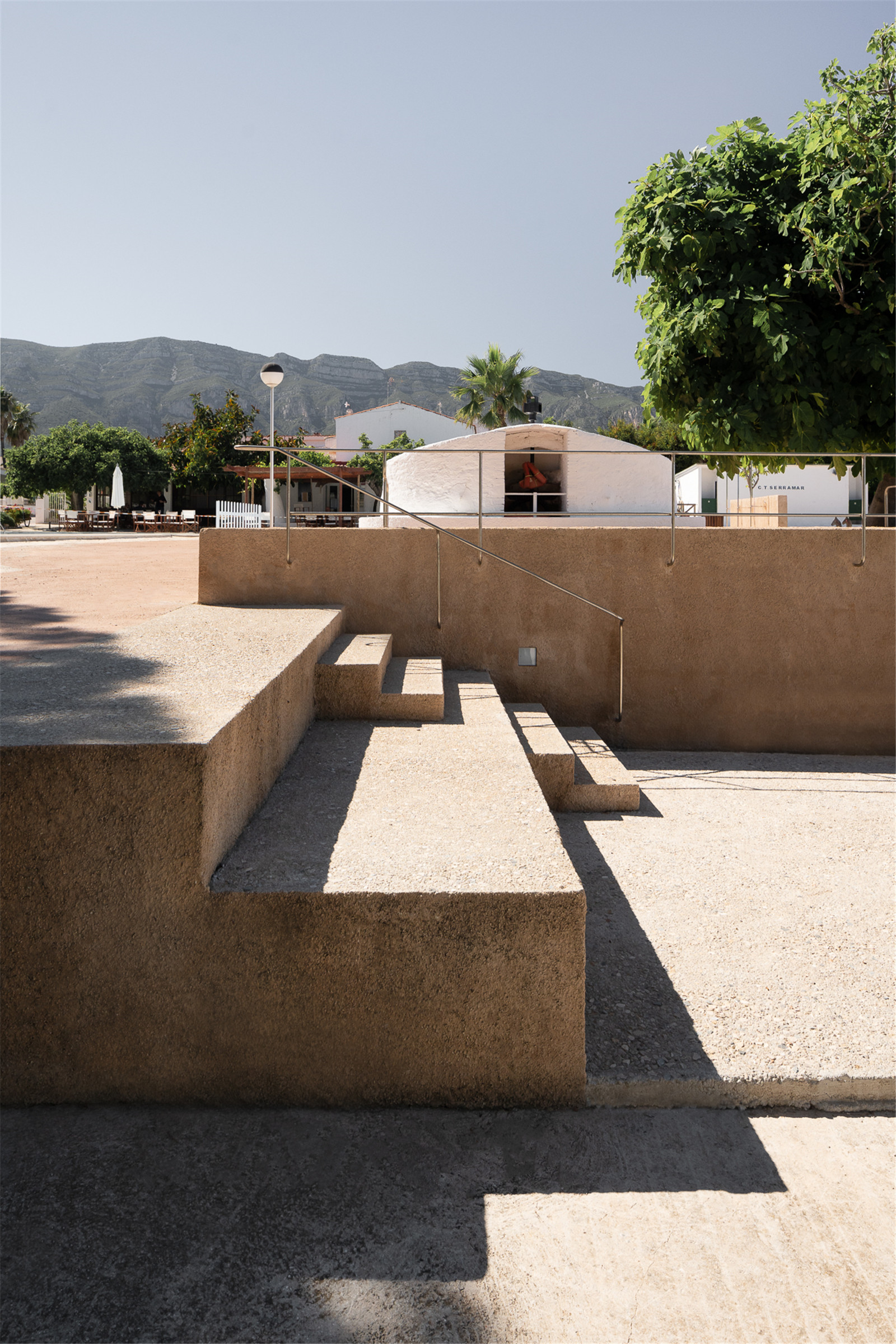
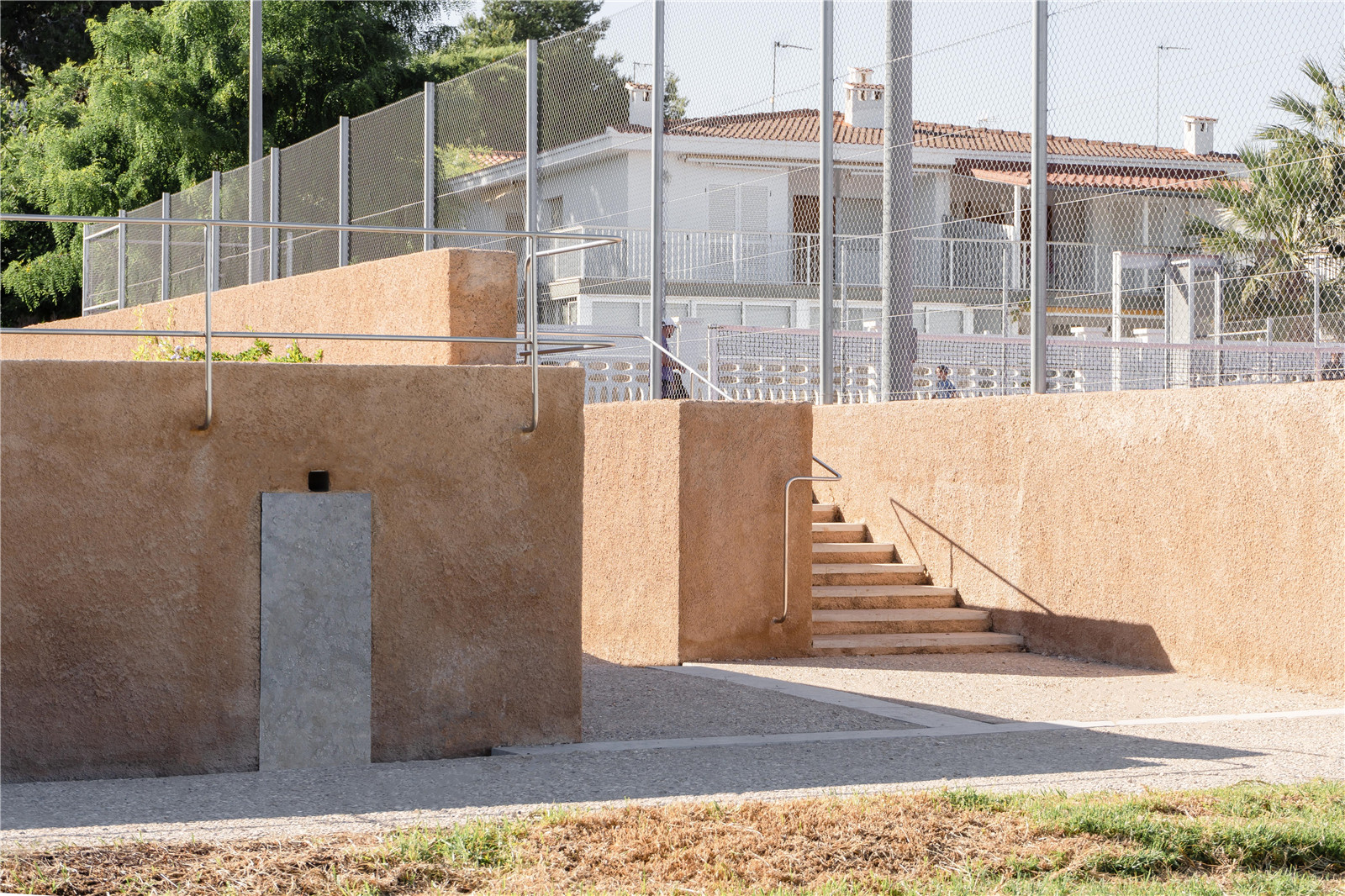
▼平台间隙被重新塑造成基础设施走廊
The interstices between platforms were turned into an infrastructure channeling © Joan Guillamat

去除人工设施,完善排水与水循环
De-urbanize, drain and cycle the water
设计团队建议移除一块网球场,以增加Masía前部的排水面积。然后,他们利用球场宽敞的地面和周围小道促进雨水的流动。再通过水渠来收集这些雨季中的地表径流,最终将它们传输至地下蓄水池中,作为绿地灌溉用水。这些绿地多由耐寒耐盐的本土植物占据,包括有银香菊、薰衣草以及所谓的鹰爪豆等灌木,以及如白桑之类的乔木。
We suggested doing away with one of the tennis courts to increase the surface drainage in front the masía. Then, we used the large surfaces of the courts and the paths surrounding them to improve the flow of water. As a result, water conduits were built to capture runoff during the seasonal bouts of rain, and to feed this water into an underground reservoir, used to irrigate the property’s green areas. These, in turn, are largely populated by autochthonous species, which require very little water and are salt-tolerant. They include shrubs, such as cotton lavender, lavender, and the so-called Spanish broom, as well as trees, like the white mulberry.
▼雨水收集设计
Runoff capture design © Joan Guillamat
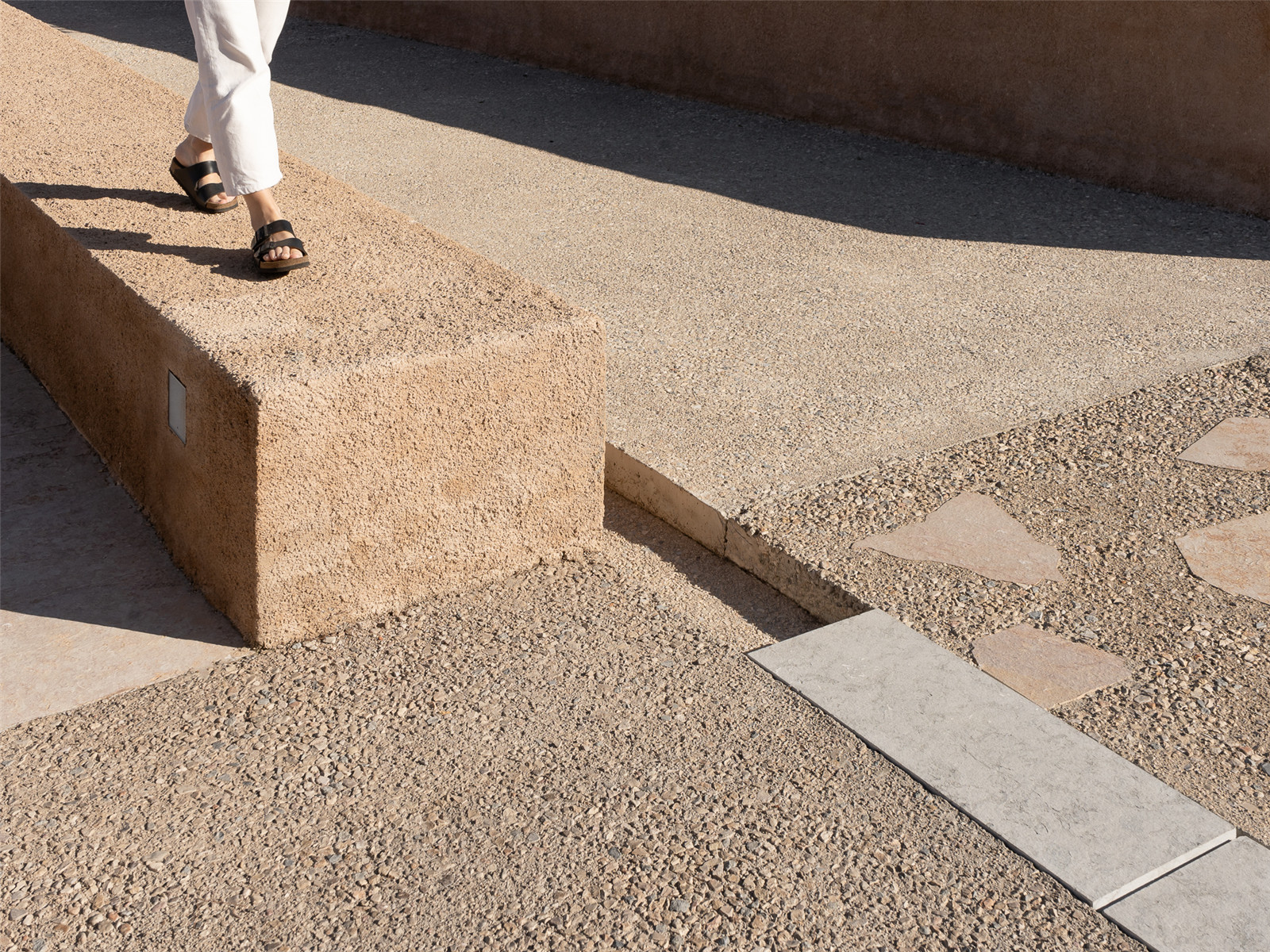
▼新的网球场入口
New entrance of the tennis courts © Joan Guillamat

▼场地中的本地植物
Autochthonous species on site © Joan Guillamat

梯田:以不变应万变
Terraces: the permanent settings for changing activities
新的平台作为永久性设施能满足各种不断变化的活动需求,解决了场地的“临时”性问题。为了尊重当地习俗,在平台建造过程中没有任何场地中的土壤被挖掘。取而代之的是利用地势来塑造台地,以及在老球场的基础来稳固新球场,从而最小化工程废料的产生。
The new platforms function as the permanent settings for a series of changing activities, solving the “meantime” situations. For its construction, and following local customs, no soil was extracted during the construction of these platforms. Instead, the terrain was shaped into terraces and, to minimize the amount of residue generated, the remains of the former courts were used to stabilize the new ones.
▼新的平台能满足各种不断变化的活动需求
The new platforms function as the permanent settings for a series of changing activities © Joan Guillamat
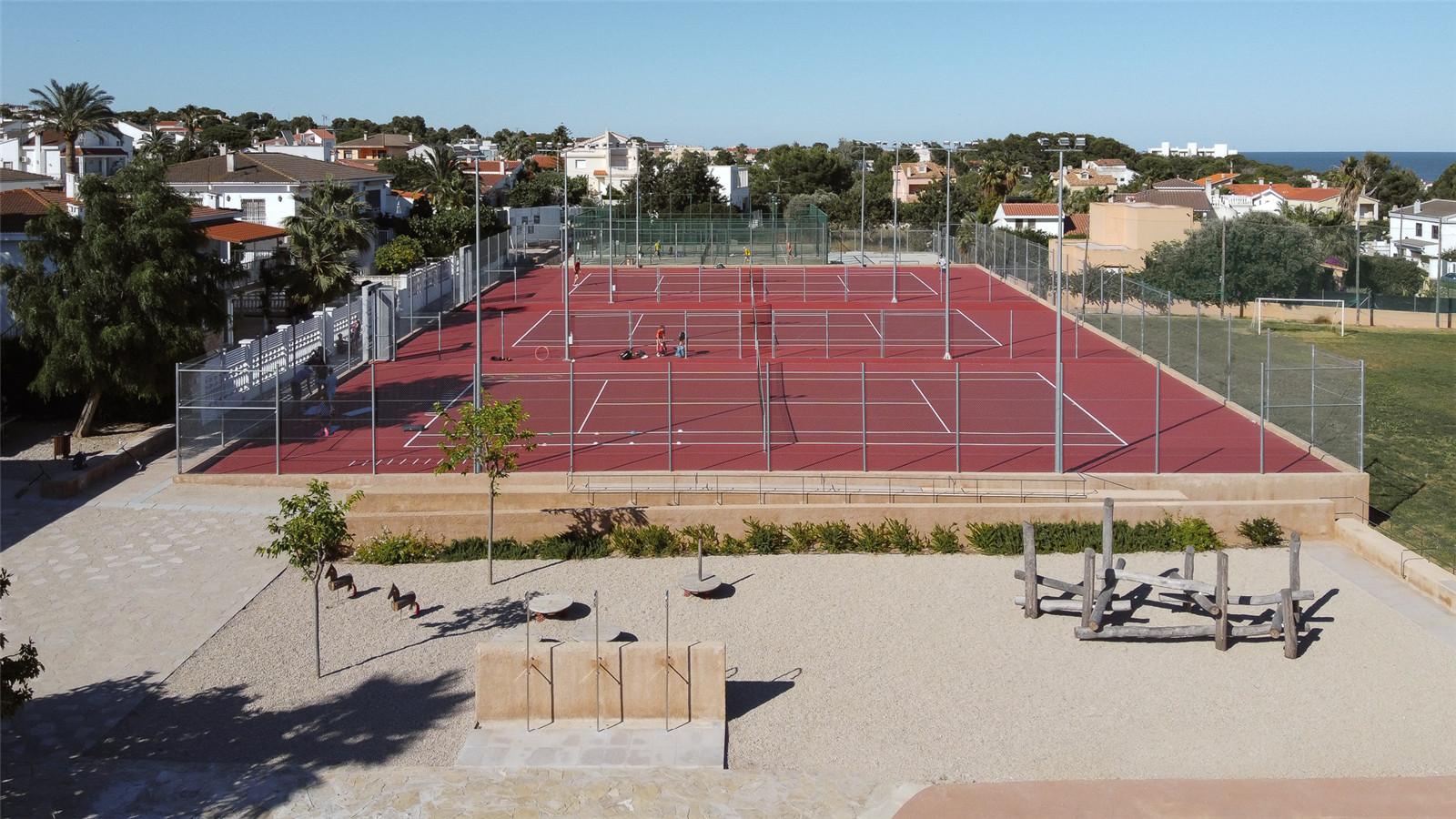
▼新球场在老球场的基础上建立起来
The remains of the former courts were used to stabilize the new ones © Joan Guillamat
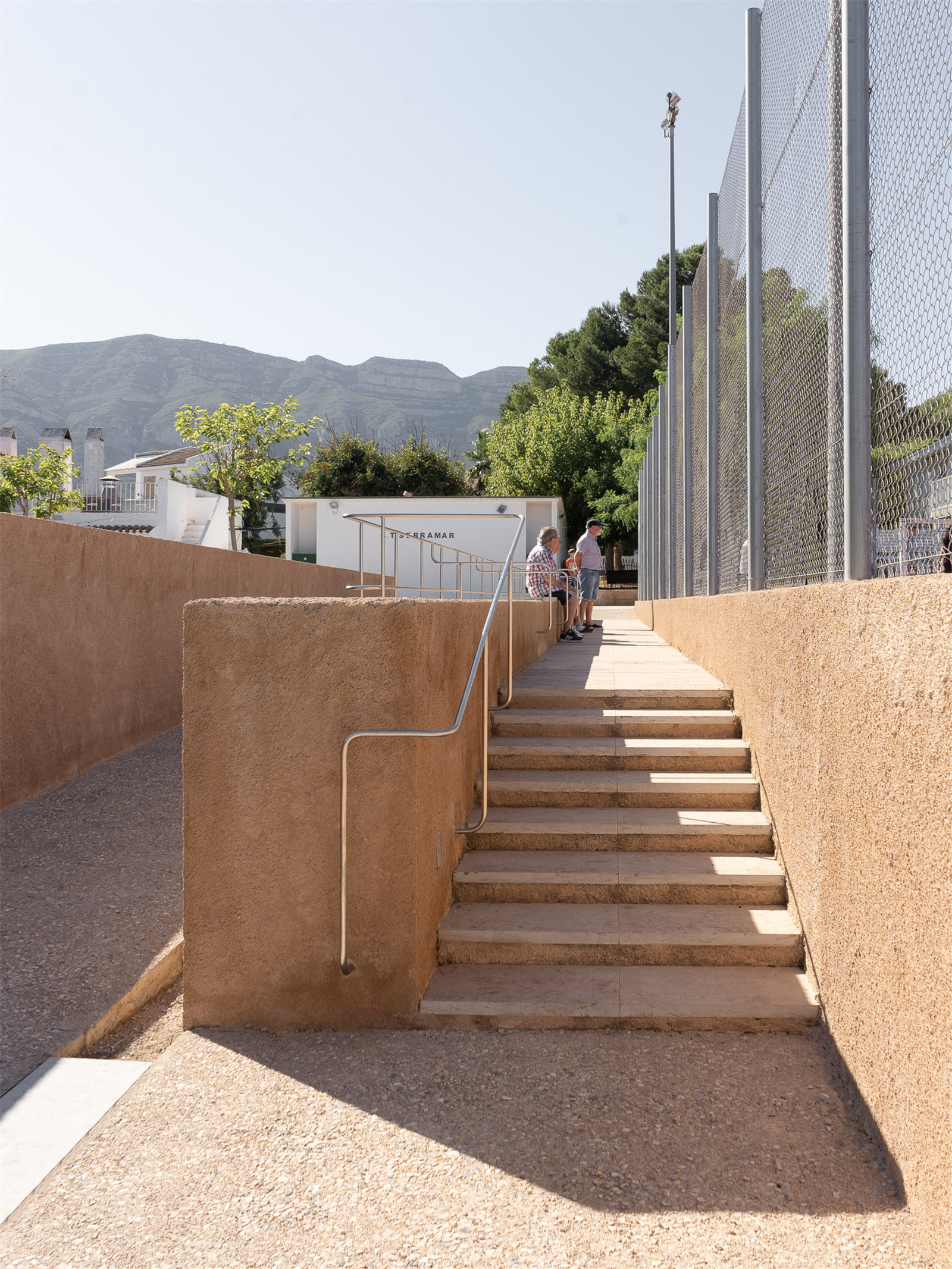
塞尼亚石的切割、碎片和沙砾
Cuts, scraps and gravel from Sénia
项目的工程阶段首先涉及了边界的界定和基础设施平台之间的设施更新。因此设计团队做出了一个务实的决定:所有的工程方案全部基于塞尼亚石的应用——这种石材开采于据场地仅10公里的采石场,并设计成任何可塑的形态,从而避免不必要的碎石产生。为了界定重要的集会空间,项目使用了标准化切割的石材作为“地毯“区的铺地。然后,再将那些在切割时产生的碎片重新用于延长现有的”碎片步道“,并且有序且随机的镶入地面中。而砂砾状的石材则用于排水设施的面层材料和混凝土骨料。最后,石材最小的形态——沙子,被用作墙壁的灰泥。
Above all, the constructive phase of the project involved delineating the borders and the intervening space between the infrastructural platforms, and in this sense, a pragmatic decision was made: all construction solutions start from the use of Sénia stone – sourced from a quarry only 10 km away – that was used in all of its possible forms, thus avoiding the unnecessary generation of rubble. To define important meeting spots, the project uses cut stone of standardized dimensions as ‘carpets’ of sorts. Then, the fragments generated in the cutting of stone were repurposed to extend an already existing ‘pavement of fragments,’ and were embedded in the floor following a pattern of structured randomness. Gravel, in turn, was used as a drainage surface and as an exposed aggregate of the water blasted concrete. Finally, in its smallest format – as sand – the stone was used for the traditional renderings of the walls.
▼塞尼亚石的材质性
The materiality of Sénia stone © Joan Guillamat
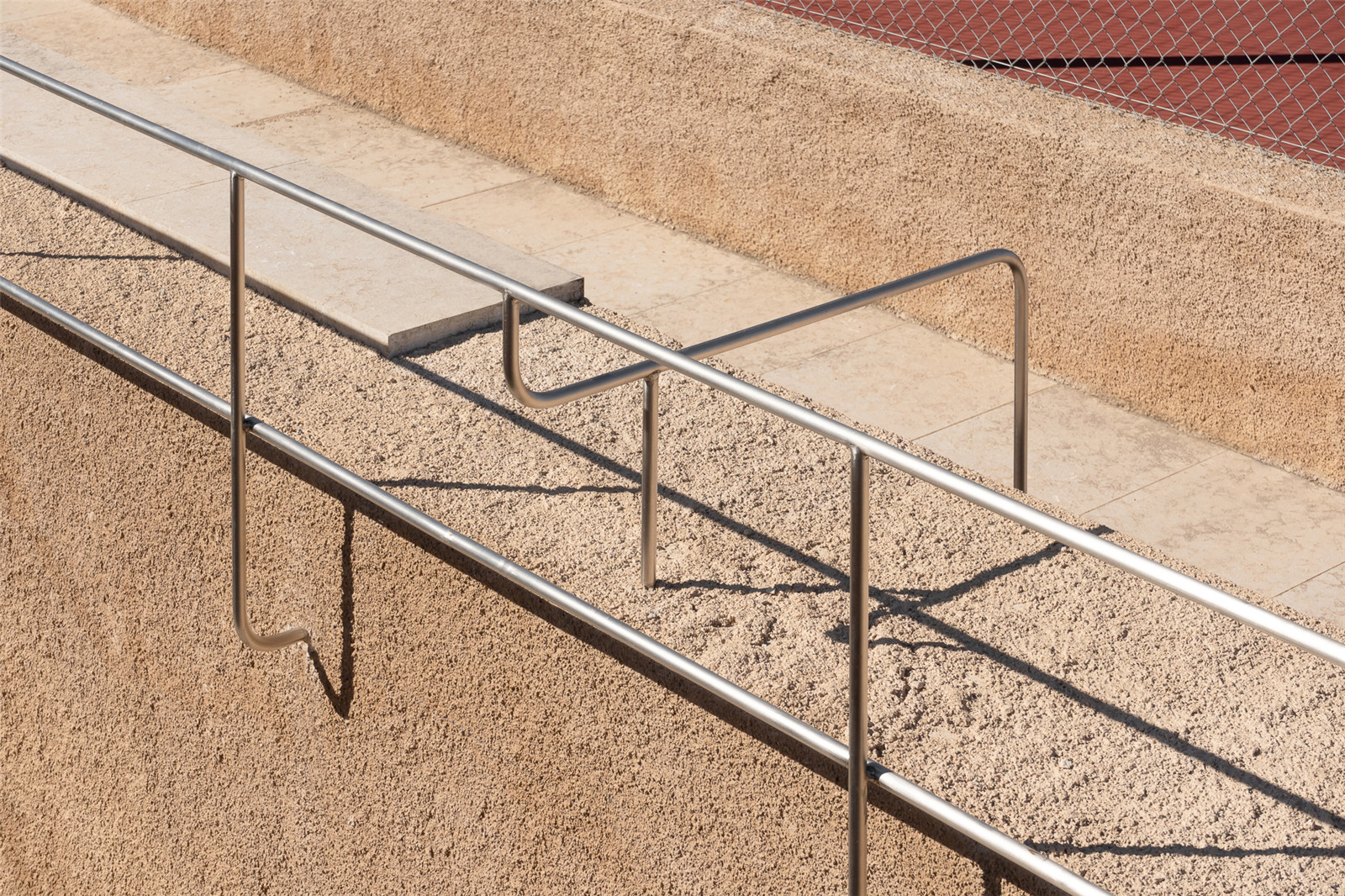
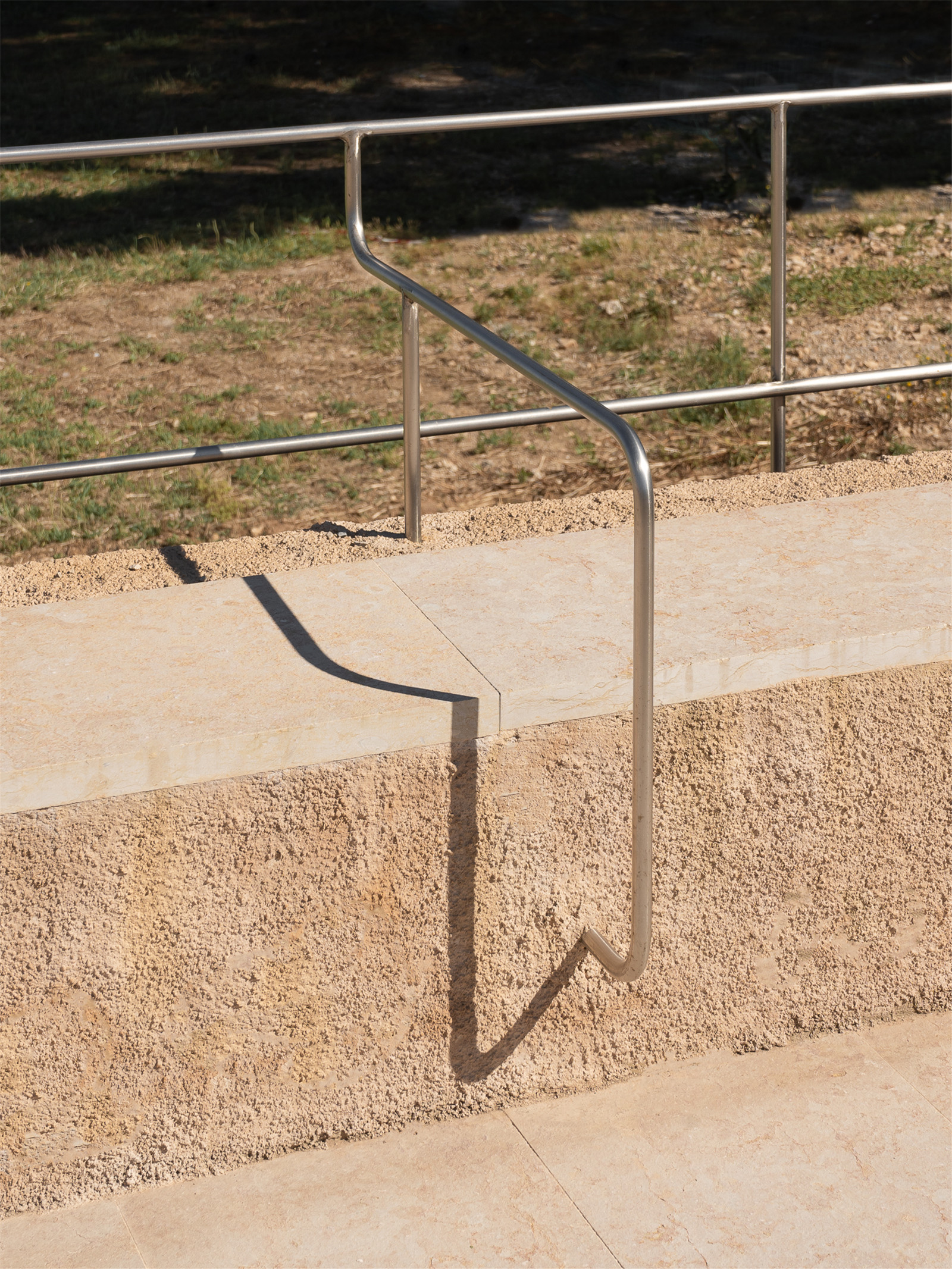
▼不同石材形态的利用
The utilization of different stone forms © Joan Guillamat
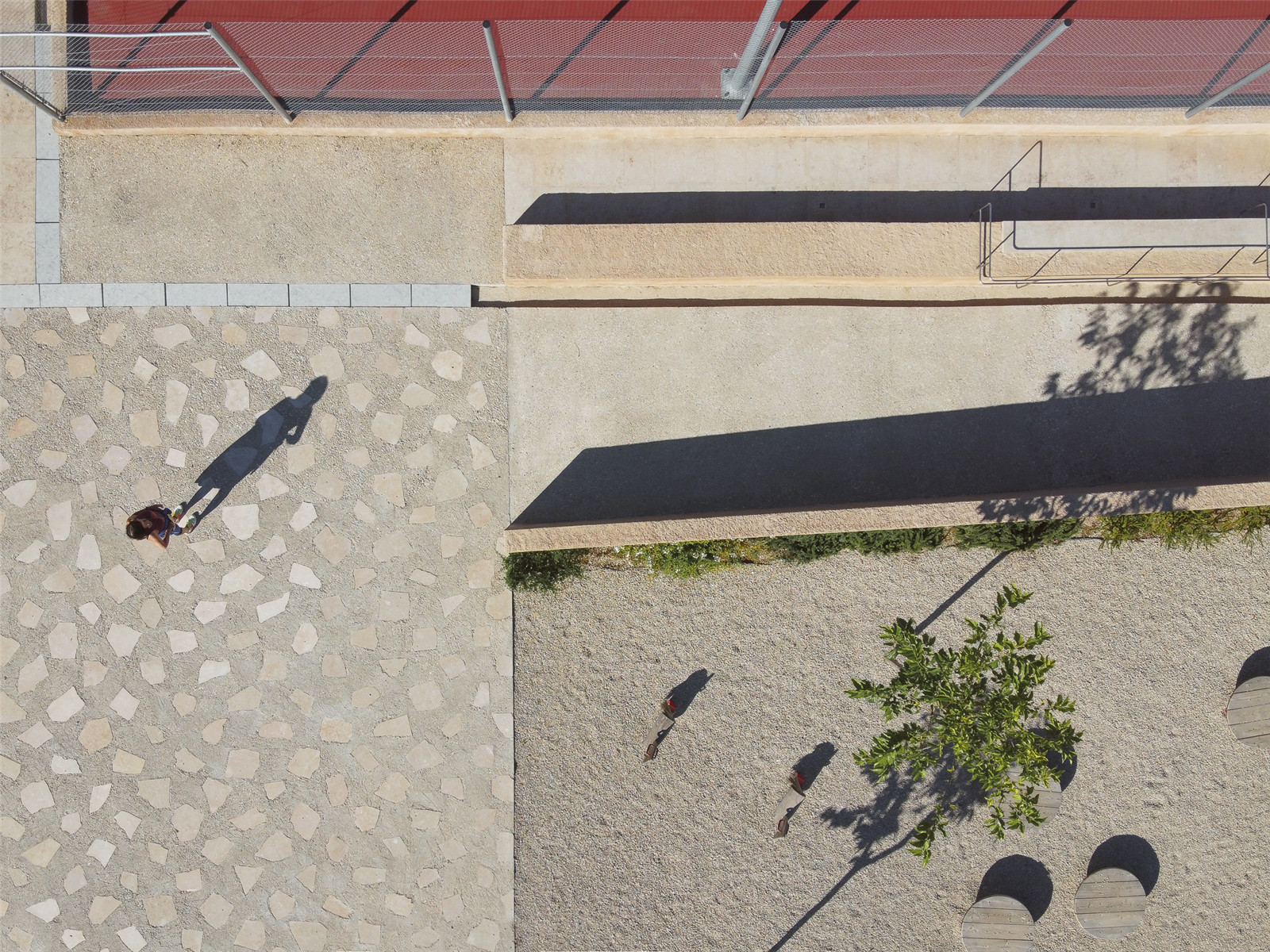
▼项目位置
The location of the project © Bajet Giramé + JAAS

▼项目平面图
Plan view of the design © Bajet Giramé + JAAS
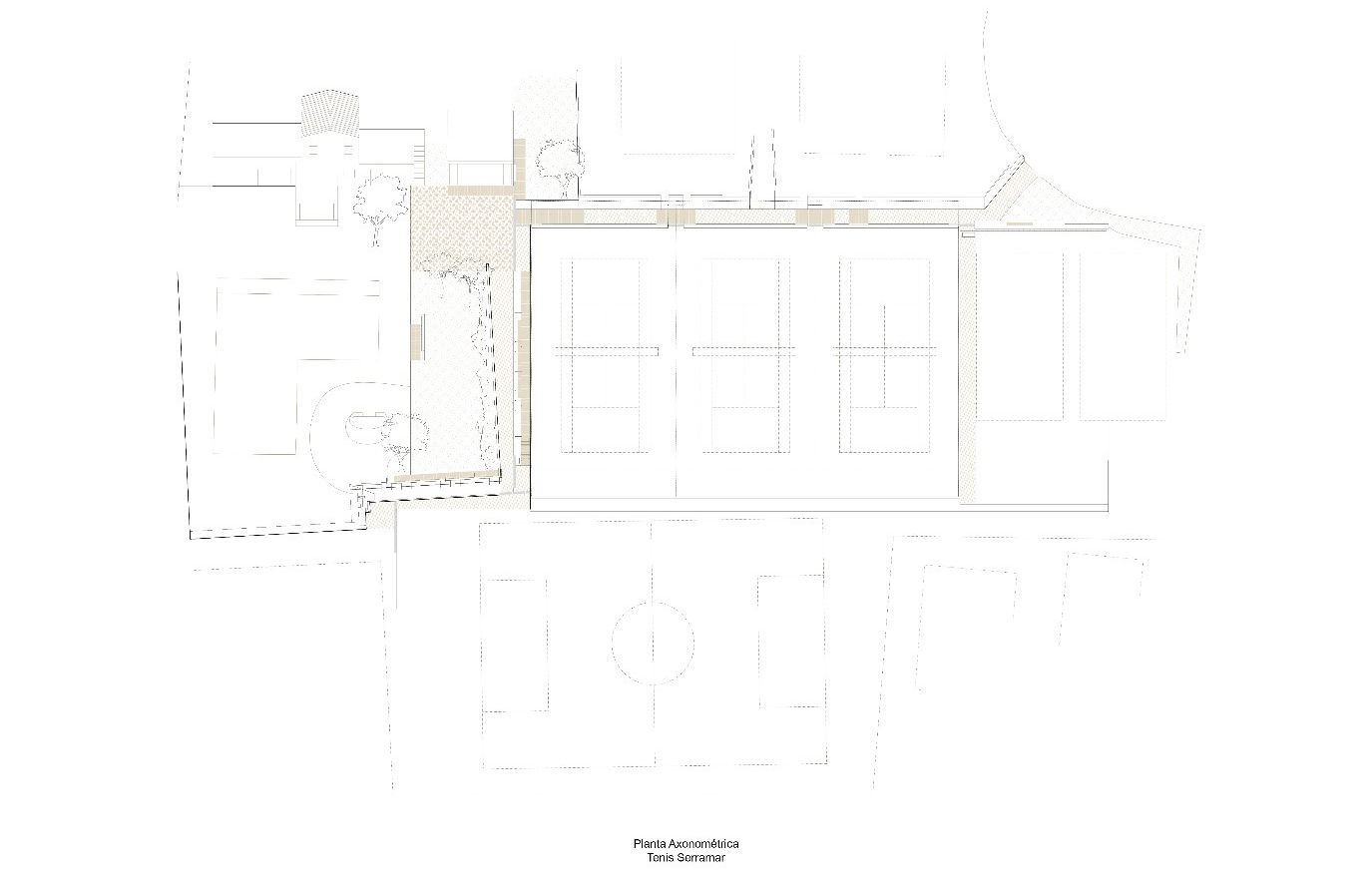
▼项目轴测图
Isometric view of the design © Bajet Giramé + JAAS
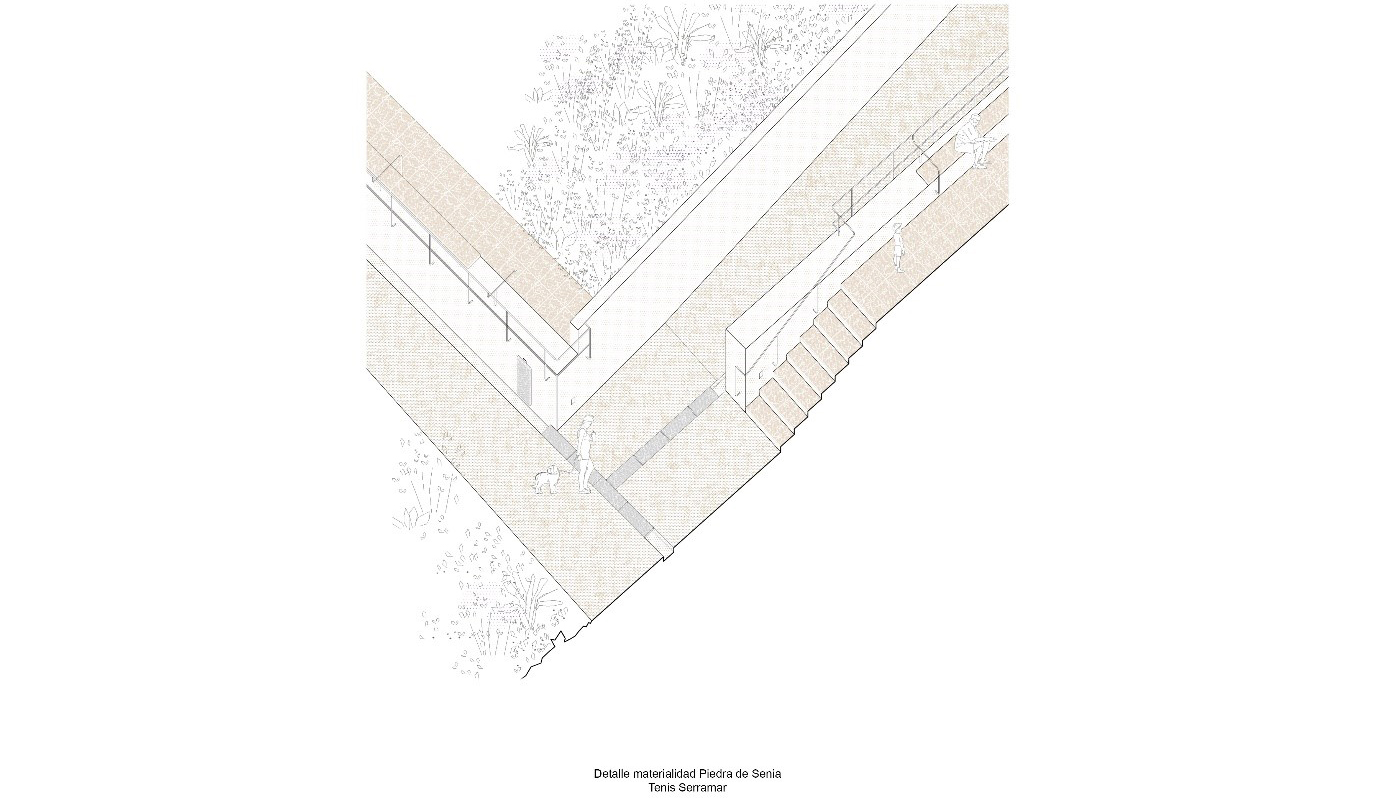
项目名称:塞拉马网球俱乐部
场地:西班牙塔拉戈纳省阿尔卡纳尔
设计公司:Bajet Giramé建筑事务所 + JAAS建筑事务所
设计师:Pau Bajet, Maria Giramé, Manuel Julià
项目规模:2800㎡
摄影:Joan Guillamat
Project Name: Tenis Serramar, 2020
Site: Alcanar (Tarragona-Spain)
Design Company: Bajet Giramé + JAAS
Designers: Pau Bajet, Maria Giramé, Manuel Julià
Project Size: 2.800 sqm
Photos: Joan Guillamat
编译:陶宇恒
校对:申瑞琪
版权声明:本文版权归原作者所有,请勿以江南电竞官网登录入口 编辑版本转载。如有侵犯您的权益请及时联系,我们将第一时间删除。
投稿邮箱:info@landscape.cn
项目咨询:18510568018(微信同号)
